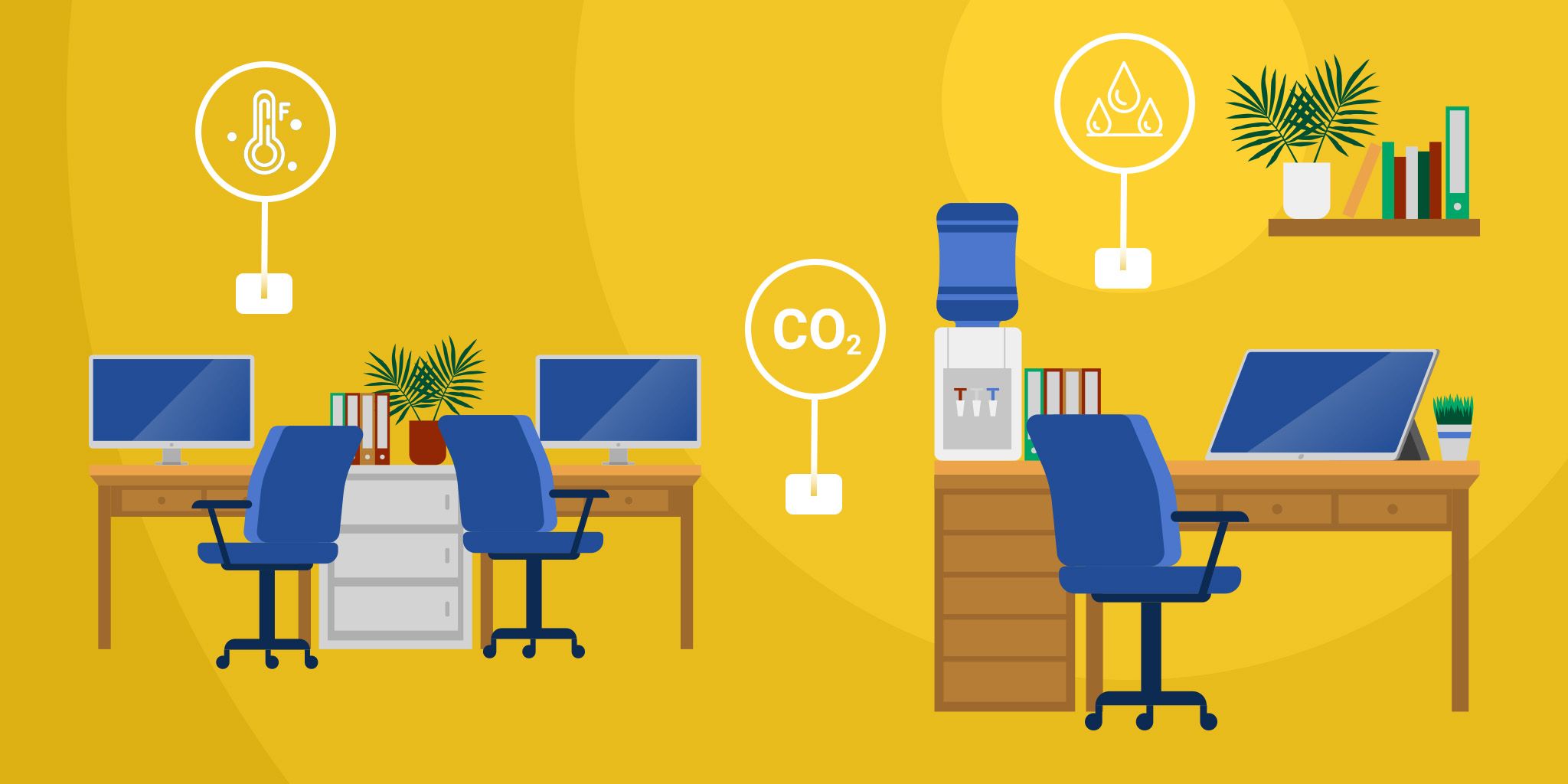Is HVAC Automation the Best Solution for Sustainable Temperature Control?
Is HVAC Automation the Best Solution for Sustainable Temperature Control?
- Last Updated: December 2, 2024
Ellie Gabel
- Last Updated: December 2, 2024



Everyone from thought leaders in IT to homebuyers has heard that HVAC automation sustainability is the solution to numerous sustainability concerns. In particular, HVAC automation is pivotal in temperature regulation in every building type. Is there validity to this claim when weighing the pros against the cons? Explore the world of eco-conscious temperature control with IoT for buildings of the future.
The Pros of Automation for Sustainable Temperature Control
The benefits of HVAC and temperature automation represent a homebuyer’s dream. What do the gains look like after it is fully integrated?
Minimized Maintenance and Increased Equipment Longevity
Legacy HVAC systems require copious maintenance, using more energy as they age. Parts are expensive, and upgrades are costly and laborious. Many smart temperature regulation systems leverage AI and machine learning for predictive maintenance and constant quality monitoring.
Automated HVAC systems may even send regular notifications on performance or alerts if they are working in an atypical fashion. This automation increases the shelf life of the products because owners may tackle repairs before they become drastic concerns.
It saves on costs and reduces excessive appliance waste that users could have prevented. In this way, it is one of the most sustainable options outside of energy awareness.
Enhanced Sustainable Energy Efficiency
HVAC automation sustainability tools provide homeowners and managers with a centralized platform for precise climate settings. Smart thermostats are the most popular options, but there are also photosensors, lighting timers, and other supplemental tools that assist in controlling temperature.
Residents may freely adjust or set up automations depending on external circumstances such as the outside weather, humidity, time of day, and even occupancy. Suppose a system is connected to a smart city hub or microgrid. In that case, utilities can take peak times and demand into account when distributing energy to reduce the carbon footprint even more. The system considers these factors to create the optimal environment for the building without expending more or less than desired.
Improved Comfort and Convenience
If the heat or AC turns on automatically, it improves quality of life and makes utility bills consistent. The conveniences of changing settings in an app or via voice control provide mental and physical comfort. Every room is always personalized to the resident’s preferences and patterns without exertion.
Constructing the most comfortable environment is optional when the occupants have traditional office jobs during the day. A home can adjust to conserve energy during working hours and return to the ideal temperature by the time people walk in the door. Smart systems are adaptive, whereas standard systems are static.
The Cons of Automation for Sustainable Temperature Control
Ignoring potential negatives would misconstrue the reality of HVAC automation sustainability for many buildings and lifestyles.
Reliance on External Factors and System Failures
When a legacy HVAC system or thermostat fails, there are often straightforward solutions for getting it up and running again. The process is more nuanced for smart temperature regulators and sensors.
Smart tech’s ability to perform relies on external factors, such as the sensors or internet connectivity. Diagnosing the source of a malfunction is more complex.
Classic HVAC systems need generators or other backup measures like calculators for adjusting settings. The backup plans for IoT devices are more challenging to set up for dependability. Is a system going to achieve sustainability if performance goes awry often without manual override controls or a reliable, equally eco-conscious alternative?
High Upfront Financial and Mental Costs
The initial costs of automated HVAC and sustainable temperature control monitoring could be more accessible. However, reduced maintenance and greater longevity may lead to lower costs over time. Outlining a cost-benefit analysis is a practical way to overcome the hurdle of the initial investment.
For some users, there is also a high mental charge. If someone has yet to use automation tools before, the learning curve is steep.
Therefore, the effectiveness of the technology is questionable if users do not learn it properly at the beginning. Since there is no formal training, variances between users could be vast. Should the world rely on inconsistent learning to achieve a decarbonized energy and tech sector?
Data Privacy and Cybersecurity Risks
How sustainable is a technology more prone to cybersecurity breaches and data privacy concerns than traditional HVAC systems? Users may increase e-waste output if they distrust the devices. One clever hacker could shut down entire networks or increase the energy expenditure of smart temperature regulators and everything else connected, compromising data while they are at it.
IoT is laden with vulnerabilities that require more robust protective measures than other tech. Additionally, IoT devices do not have as well-informed compliance standards as other, older tech systems. Users must stay aware of regularly updating regulatory advice to have the most up-to-date security.
Is Automation the Answer?
The most genuine answer to this question is it depends on the circumstances. Using IoT and HVAC automation is worth the investment for many, and the data shows positive results. However, IoT is customizable, providing unique experiences for all.
Sustainable temperature control happens with proper automation management and tools, but other ways exist to facilitate energy consumption without using expensive technologies. Success also depends on the building and the owner’s priorities, as well as their past in experimenting with other eco-friendly regulation options.
The Most Comprehensive IoT Newsletter for Enterprises
Showcasing the highest-quality content, resources, news, and insights from the world of the Internet of Things. Subscribe to remain informed and up-to-date.
New Podcast Episode

IoT and AI in 2026
Related Articles





